It happened abruptly. You got up from your chair and can’t straighten your knee. Should you be alarmed? What does it mean when your knee won’t’ straighten? What are the 8 major causes of why you can’t straighten the knee? When should you be concerned about not being able to straighten the knee? What are the treatment options? Let’s dig in.
What Does It Mean When your Knee Won’t Straighten?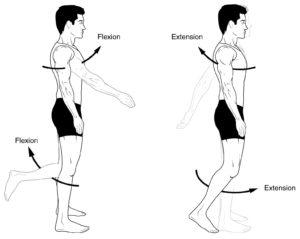
Your knee is capable of moving in a number of directions. The most common are flexion and extension. Flexion is when you bend your knee and the shin bone moves towards the buttock. Knee extension is when you straighten out your knee. Extension is the opposite of flexion. PT, trainers, and physicians alike measure the degree of knee flexion and extension. When lying flat on an examination table or hard surface your knee should be able to extend so that there is no angle between the thigh and shin bone. The inability to straighten the knee is also known as an extension lag, and is a reason for concern.
What Are the Major Causes of Why I Can’t Straighten the Knee?
Being unable to straighten your knee can be frightening. There are multiple factors involved in the movement of the knee. The major causes of inability to straighten the knee include:
Meniscus Tear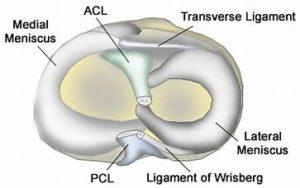

The meniscus is a C shaped cushion situated between the thigh bone and shin bone. Each of us has two menisci per knee. One on the inside (medial) and one of the outside (lateral) of the knee. The meniscus functions as a shock absorber and joint stabilizer and is susceptible to injury. Meniscus tears are among the most common knee injuries. There are many different types of meniscus tears that are classified (1). Examples include horizontal, vertical, complex, and flap tear. Risk factors for meniscus tears include advanced age, male gender, work-related kneeling, and climbing stairs (2). Injury to the meniscus can cause a number of symptoms which include:
- Pain
- Swelling
- Inability to straighten the knee
Quadriceps Tendon Injury
The quadriceps muscle is a powerful muscle located in the front of the thigh. It is actually composed of 4 different muscles which include the rectus femoris, vastis medius, lateralis, and intermedius. The quadriceps functions as a powerful extensor of the knee. Tendons are thick pieces of connective tissue that connect the muscle to bone. The quadriceps muscle is susceptible to injury. Common causes of injury include age over 40 years, steroid use, chronic and repetitive knee injections (3). Quadriceps tendon injuries typically produce anterior knee pain (4). It can also prevent you from straightening your knee.
Patella Tendon Injury
The patella tendon is a thick piece of connective tissue that connects the kneecap (patella) to the shin bone. It is important in stabilizing the knee cap and knee extension. Injuries occur in athletes who participate in jumping and running sports. Injury to the patellar tendon can cause patients to complain that they can not straighten their knee
ACL Injury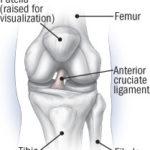

The anterior cruciate ligament (ACL) is a key stabilizer of the knee. The ligament extends from the thigh bone (femur) to the shin bone (tibia) and limits forward and rotational movement of the knee. Tears in the ACL can occur as a result of trauma, and rapid pivoting and cutting movements. ACL tears account for 64% of athletic knee injuries in pivoting sports resulting in 120,000- 200,000 ACL reconstructions annually in the United States (5). There are numerous signs and symptoms of an ACL tear. Symptoms may vary from patient to patient. The most common ones are:
- Pain
- Rapid swelling
- inability to straighten the knee
Acute Injury with Swelling
Injury to the knee can cause swelling. This is also called fluid on the knee. This swelling can significantly reduce knee movement. If severe, the swelling can cause the inability to straighten the knee.
Osteoarthritis/Bone Spur
A bone spur is the growth of additional bone along the edges of a joint. It is also called an osteophyte. Bone spurs develop as a result of trauma, instability, and arthritis. If large enough they can prevent the knee from straightening. Bone spurs can cause a physical block to full knee extension.
Patella or Kneecap Dislocations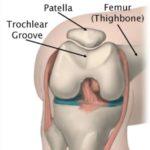

The kneecap is intended to slide smoothly up and down the boney groove in the thigh bone. The groove is called the trochlear groove. If the knee cap becomes dislocated from this boney groove it can cause patients to complain that they can’t straighten the knee. The annual incidence of primary patellar dislocation is 5.8 per 100 000 in the general population (6). This occurs most frequently in the 10- to 17-year age group. Causes of kneecap dislocations include trauma, weak muscles, and female gender.
Muscle Imbalance
The body is a miraculous system. It requires synchronized movements between muscles, tendons, and ligaments. If muscle imbalance occurs the system can breakdown. The muscles in the lower legs must work together to allow full flexion and extension of the knee. If the hamstrings become chronically tight and the quadriceps are weak it may be challenging or difficult to straighten your knee.
When Should I be Concerned About Not Being Able to Straighten Knee?
A single episode where you can’t straighten knee that is not associated with other symptoms typically does not warrant concern or further evaluation. Multiple episodes of not being able to straighten your knee warrants further evaluation. Who should evaluate the clicking in your knee? Bypass your surgeon and schedule a consultation with a physician trained in Interventional Orthopedics. Surgeons provide surgical solutions that are not always in your best interest. What is Interventional Orthopedics? It is a board-certified physician in PM& R or anesthesia with advanced orthopedic training with nonsurgical treatment options. They use orthobiologics to heal injured orthopedic tissue. Orthobioligcs are biological substances naturally found in the body that are used to promote quicker healing of muscle, tendon, and bone injuries. To learn more please click on the video below.
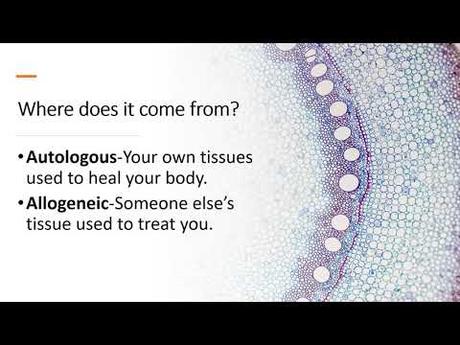
What Are the Treatment Options?
Identifying the underlying cause of why you can not straighten your knee will provide the best clinical results. Conservative therapy when appropriate is always the first line of treatment.
Meniscus tear
Not all meniscus tears are painful. In fact, in one study 60% of patients without pain had meniscus tears on MRI. PRP is effective in the treatment of meniscus tears. Steroids should be avoided as they are toxic. Meniscus surgery has been demonstrated to be no better than PT (7). In addition, it increases the risk of knee instability and arthritis. To learn more about the treatment of meniscus tears please click on the video below.
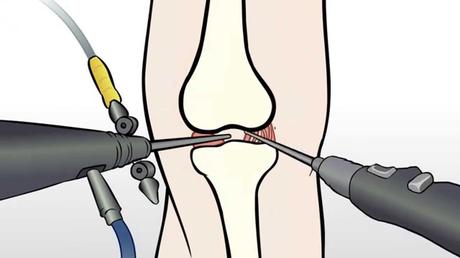
Osteoarthritis
Osteoarthritis is the most common form of arthritis. It is a joint disease where the cartilage that lines and protects the joint gradually wears down resulting in pain, swelling, and restriction in movement. Approximately 13% of women and 10% of men aged 60 years and older have symptomatic knee osteoarthritis (8). Risk factors for knee osteoarthritis include obesity, female gender, repetitive knee trauma, muscle weakness, squatting, and meniscus injuries (9). Loss of cartilage and bone spur formation can both result in you not being able to straighten your knee.
ACL Injuries
The Centeno-Schultz Clinic physicians are experts in the treatment of ligament injuries. We pioneered the use of bone marrow stem cells in the nonsurgical treatment of ACL tears allowing patients to forgo the risks and complications of traditional ACL graft surgery. The risks of the ACL graft surgery are significant and include a 6x’s risk of re-tear within 24 months post-surgery (7) and development of arthritis (8). To learn more about the non-surgical treatment of ACL injuries please click on the video below.
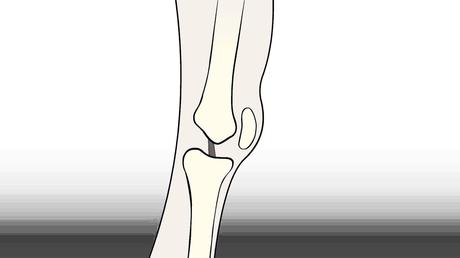
Patellar and Quadriceps Tendon Injuries
Patellar and Quadriceps tendon injuries are easily visualized with ultrasound. The specific type and location of the injury can be identified. Treatment options include PRP or stem cell injections depending upon the severity of the injury,
In Conclusion
Flexion and extension are normal knee motions. There are 7 major causes that prevent your knee from straightening. These include meniscus tears, quadriceps tendon injury, patellar tendon injury, ACL injury, acute swelling, osteoarthritis, patellar dislocation, and muscle imbalance. Multiple episodes of inability to straighten your knee warrants concern and evaluation. Surgeons provide surgical solutions that are not always in your best interest. A physician trained in Interventional Orthopedics can provide you the best nonsurgical, non-steroid treatment options. Identifying the underlying cause is critical for the best clinical results. The Centeno-Schultz Clinic physicians are experts in the treatment of knee injuries. Treatment options include PRP and stem cell injections.
Being unable to straighten your knee is a warning sign. Act now before the problem gets bigger and the options are limited. Schedule a Telemedicine consult with a board-certified physician who can review your history, studies, and provide you the best nonsurgical treatment option. Listen to your body as it is warning you!
1. Mordecai SC, Al-Hadithy N, Ware HE, Gupte CM. Treatment of meniscal tears: An evidence based approach. World J Orthop. 2014;5(3):233-241. Published 2014 Jul 18. doi:10.5312/wjo.v5.i3.233.
2.Snoeker BAM, Bakker EWP, Kegel CAT, Lucas C. Risk factors for meniscal tears: a systematic review including meta-analysis. J Orthop Sports Phys Ther 2013;43:352-367.
3.Flanigan D.C., Troyer J., Everhart J.S., Uribe J.W., Wherley E., Yagnik G.P. (2017) Extensor Mechanism Injuries: Quadriceps and Patellar Tendon Ruptures. In: Eltorai A., Eberson C., Daniels A. (eds) Orthopedic Surgery Clerkship. Springer, Cham. https://doi.org/10.1007/978-3-319-52567-9_68
4.King D, Yakubek G, Chughtai M, et al. Quadriceps tendinopathy: a review, part 2-classification, prognosis, and treatment. Ann Transl Med. 2019;7(4):72. doi:10.21037/atm.2019.01.63
5.. Kim S, Bosque J, Meehan JP, Jamali A, Marder R. Increase in outpatient knee arthroscopy in the United States: a comparison of National Surveys of Ambulatory Surgery, 1996 and 2006. J Bone Joint Surg Am. 2011;93(11):994-1000.DOI: 10.2106/JBJS.I.01618.
6.Jain NP, Khan N, Fithian DC. A treatment algorithm for primary patellar dislocations. Sports Health. 2011;3(2):170-174. doi:10.1177/1941738111399237.
7.Collins JE, Losina E, Marx RG, et al. Early Magnetic Resonance Imaging-Based Changes in Patients With Meniscal Tear and Osteoarthritis: Eighteen-Month Data From a Randomized Controlled Trial of Arthroscopic Partial Meniscectomy Versus Physical Therapy. Arthritis Care Res (Hoboken). 2020;72(5):630-640. doi:10.1002/acr.23891
8.Heidari B. Knee osteoarthritis prevalence, risk factors, pathogenesis and features: Part I. Caspian J Intern Med. 2011;2(2):205-212.
9.Yoshimura N, Muraki S, Oka H, Kawaguchi H, Nakamura K, Akune T. Association of knee osteoarthritis with the accumulation of metabolic risk factors such as overweight, hypertension, dyslipidemia, and impaired glucose tolerance in Japanese men and women: the ROAD study. J Rheumatol. 2011;38(5):921-930. doi:10.3899/jrheum.100569.

